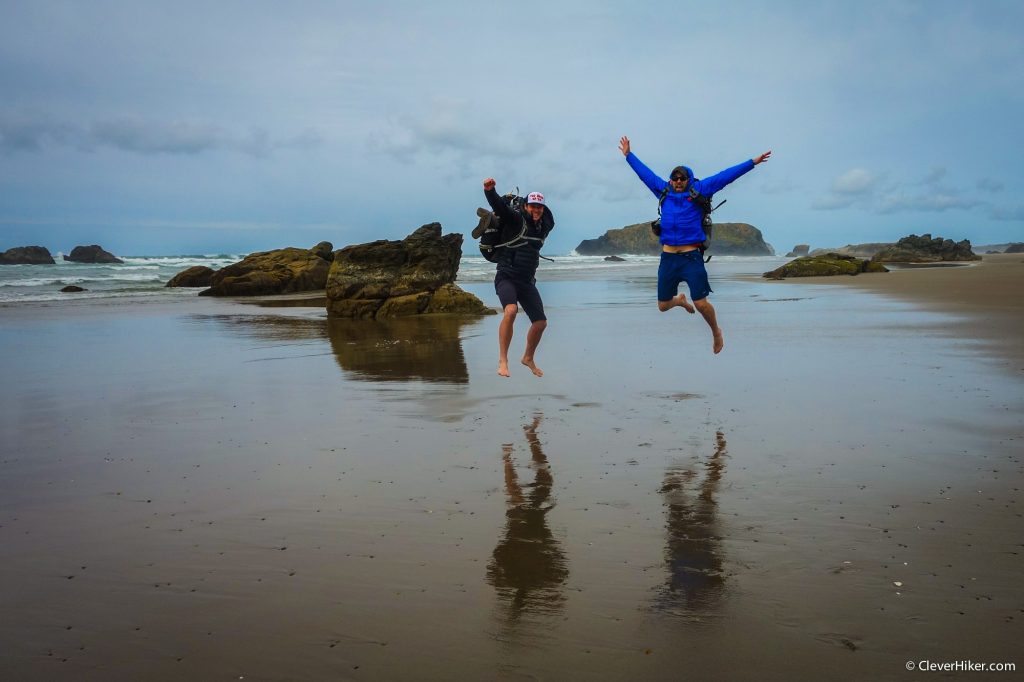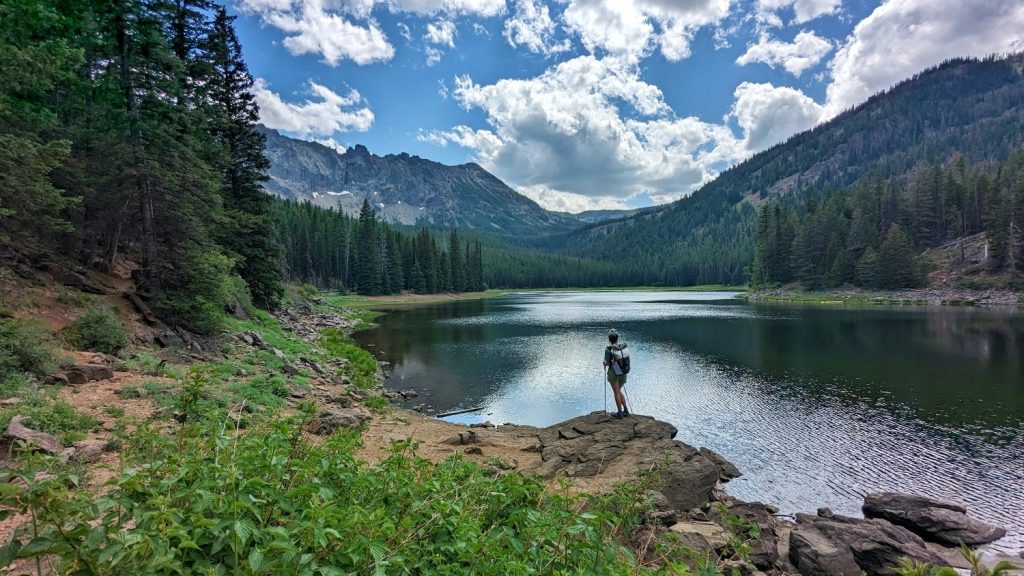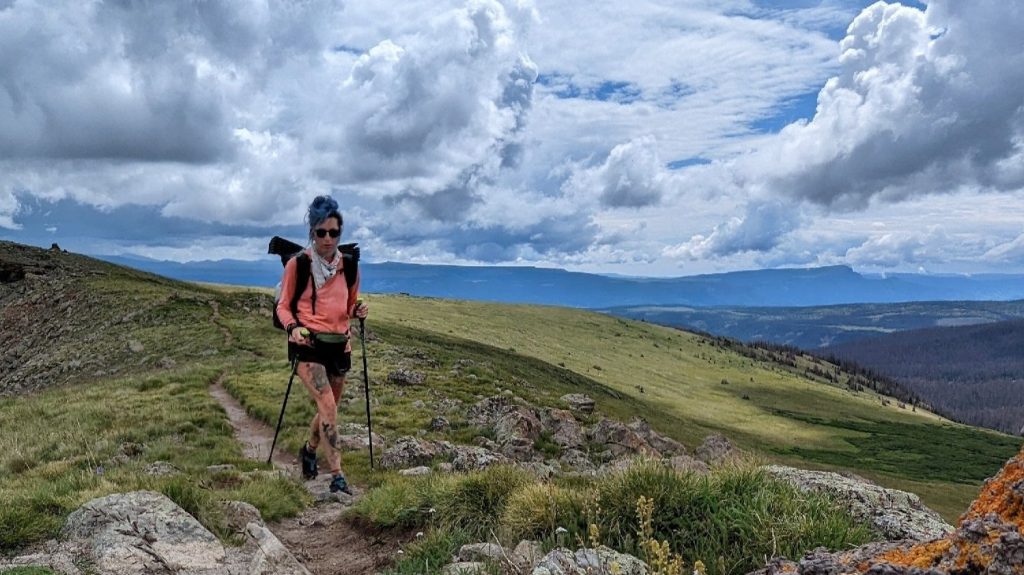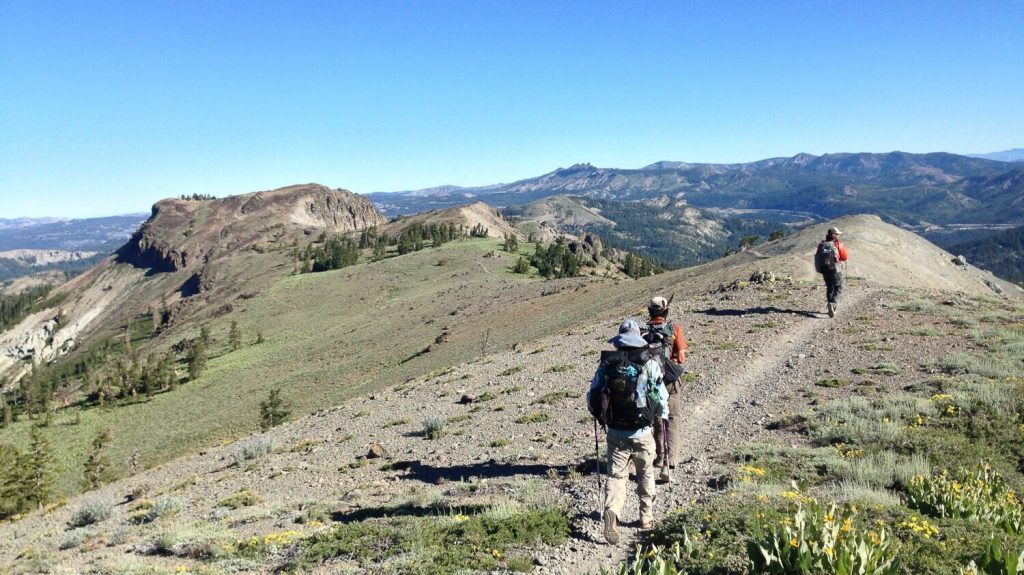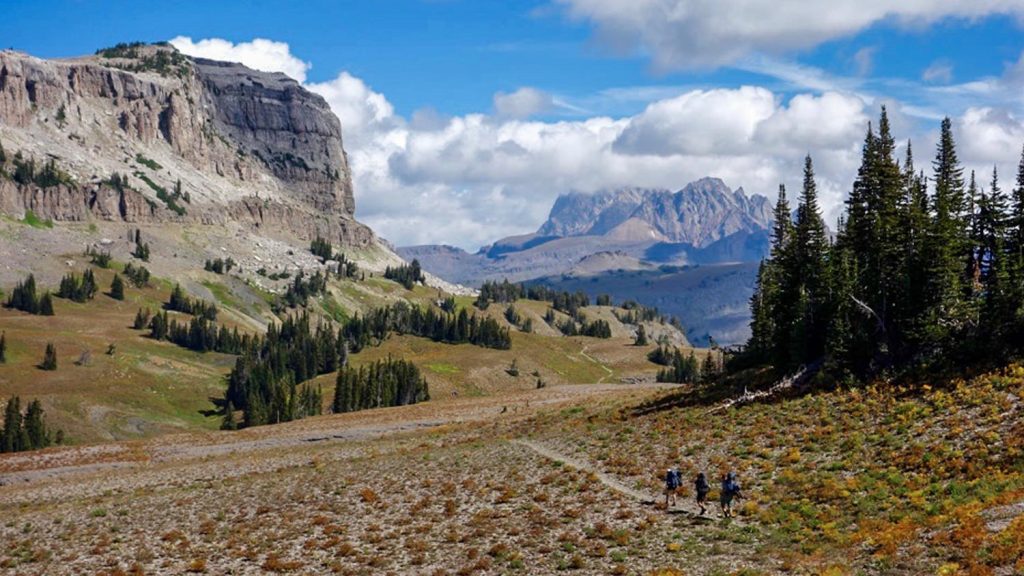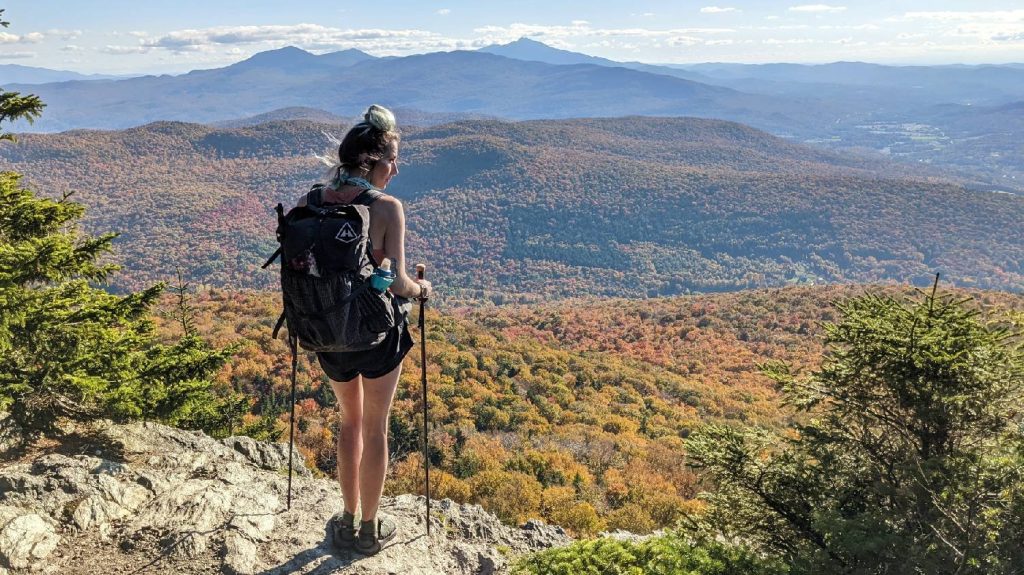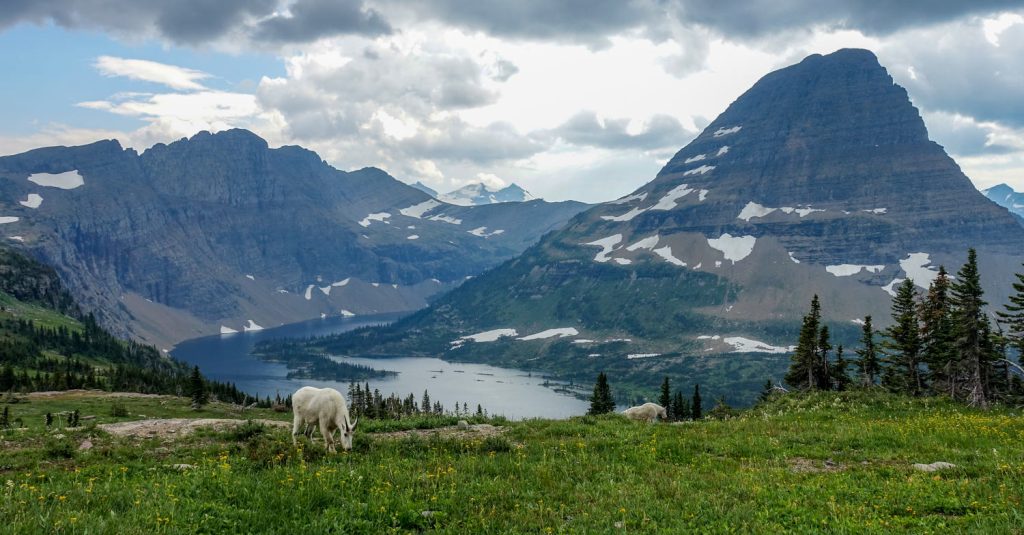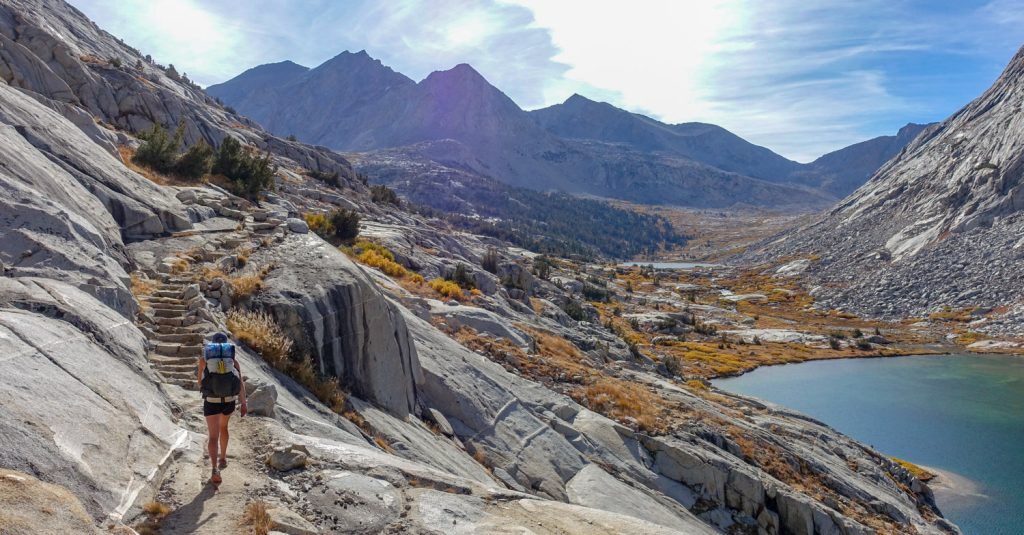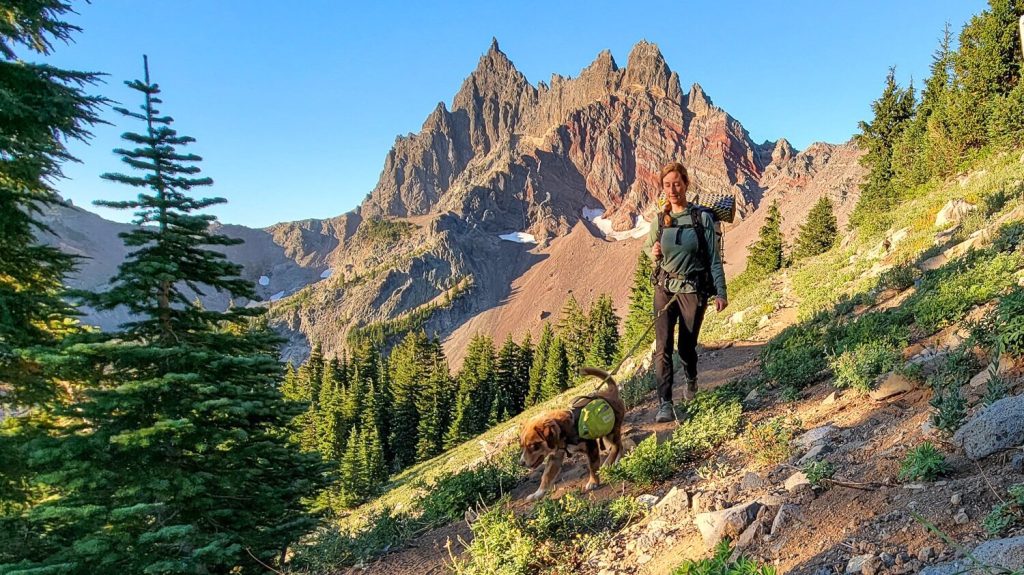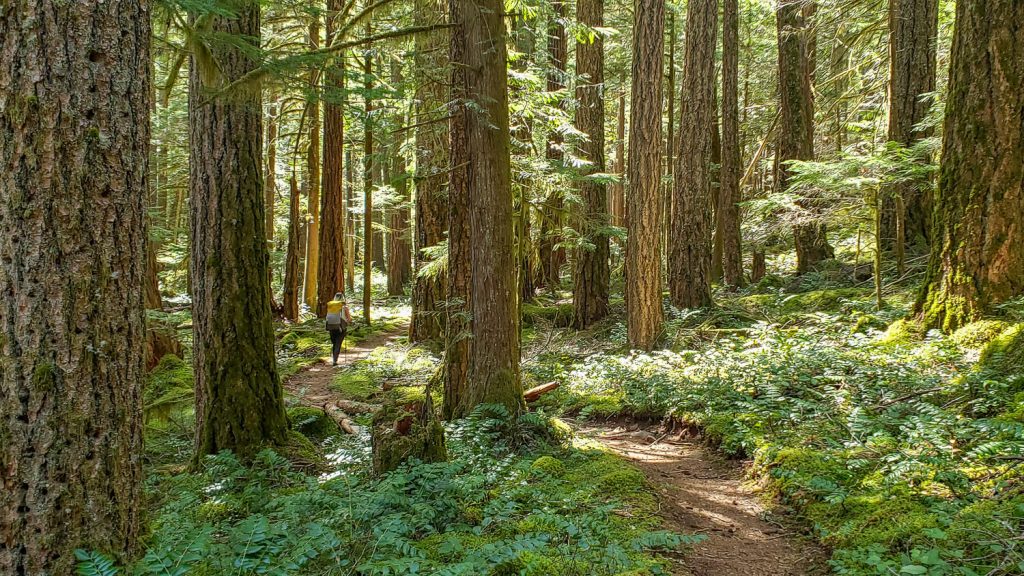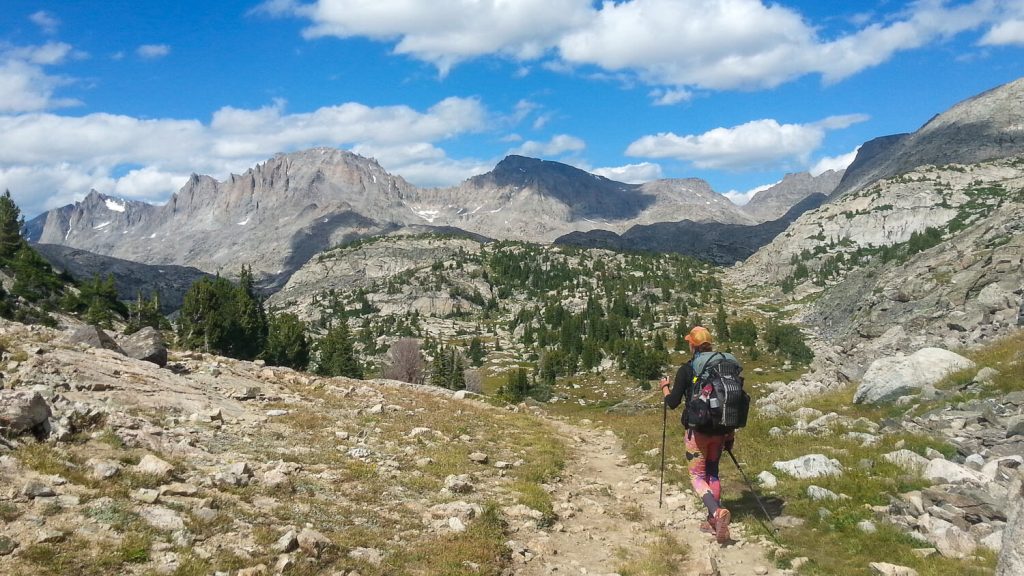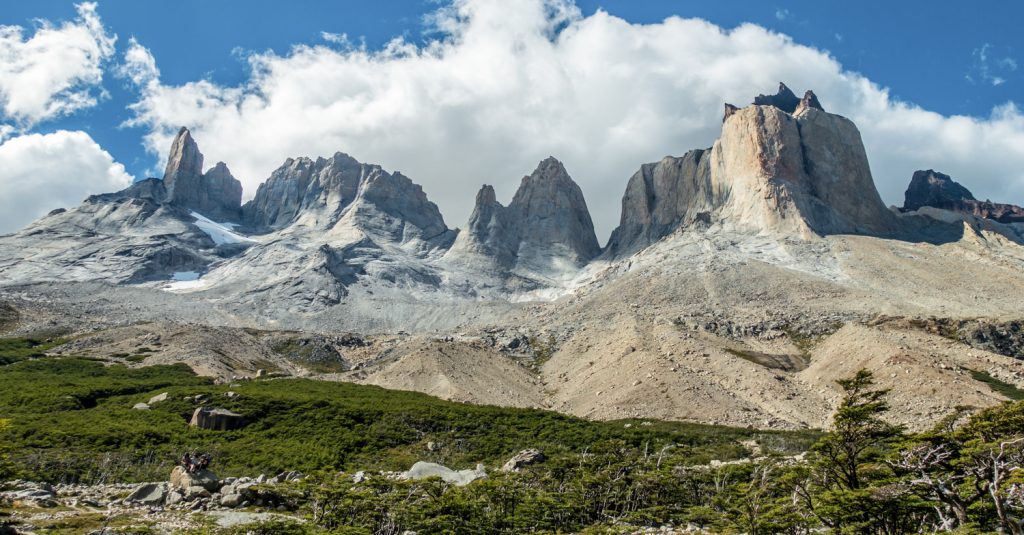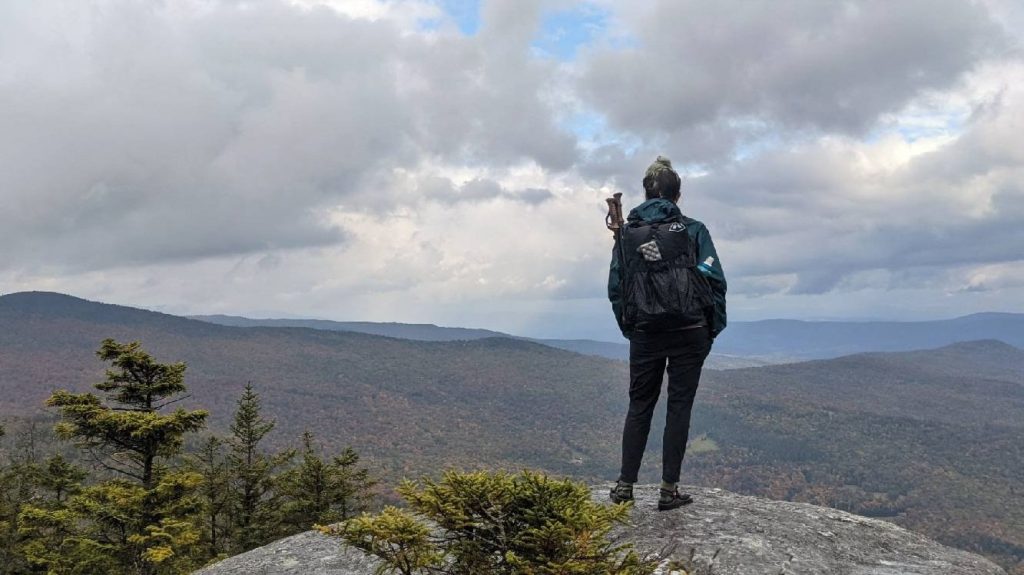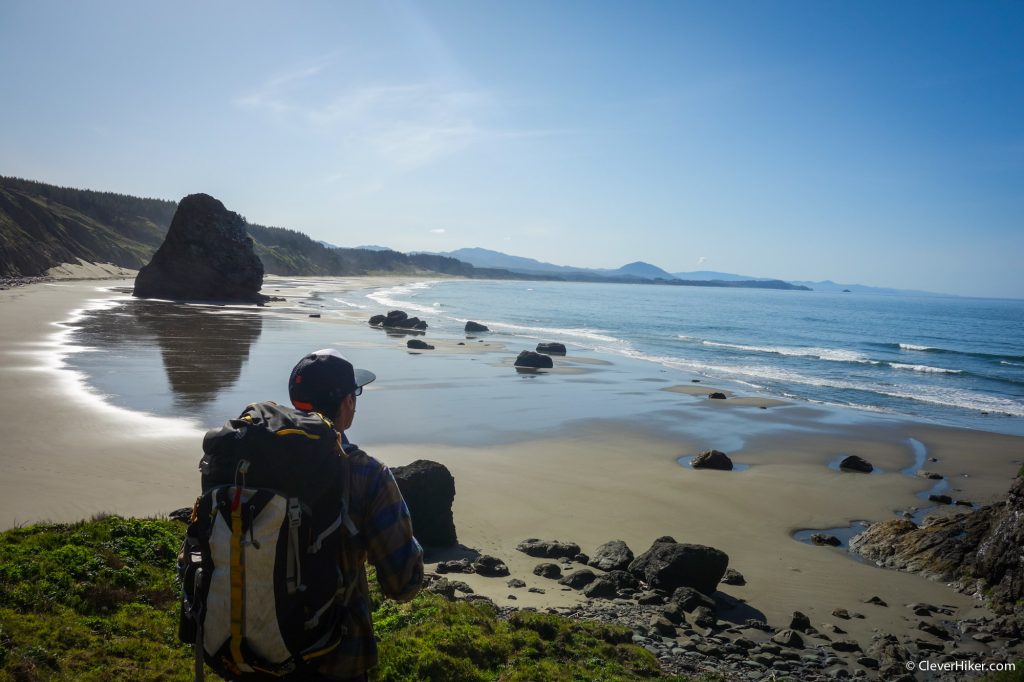
Two weeks ago I had the pleasure of exploring this beautiful section of the Oregon Coast Trail with one of my best friends. The trip was a spectacular reminder of how rewarding and diverse backpacking can be. James and I were both blown away by the pristine seclusion of this 30-mile stretch of Oregon coast. I highly recommend placing this trip on your Oregon backpacking to-do list. You will not be disappointed.
Here’s a quick trip report and some helpful planning tips to make your trek more straightforward. If you have any thoughts or questions, please leave me a comment below. If you enjoy this post, feel free to spread the love with a “like” or “share” at the bottom. Thanks!
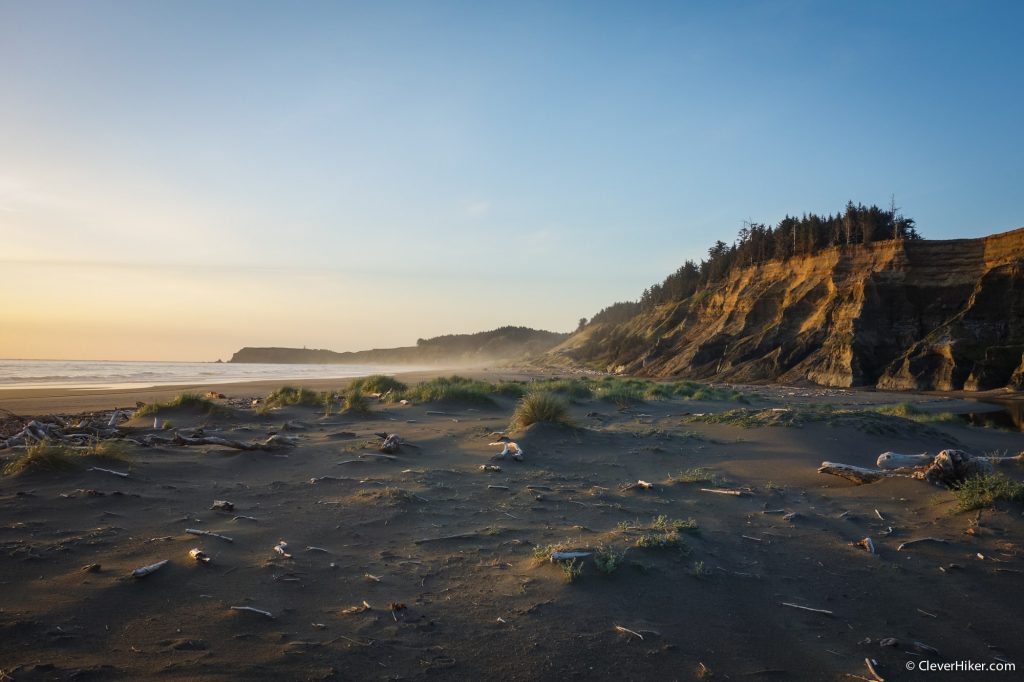
Highlights:
- Pristine beach scenery
- Surprising solitude
- Rugged rock formations
- Magnificent sunsets
- Abundant ocean wildlife
- Cape Blanco Lighthouse
- No permits needed
- Walking on hard-packed sand
- It’s right near the beach (boy-eee!)
Lowlights:
- 3 Large river crossings
- Some camping restrictions
- Shuttle or hitchhike necessary
- Possibility of strong storms and wind
- Walking on soft sand
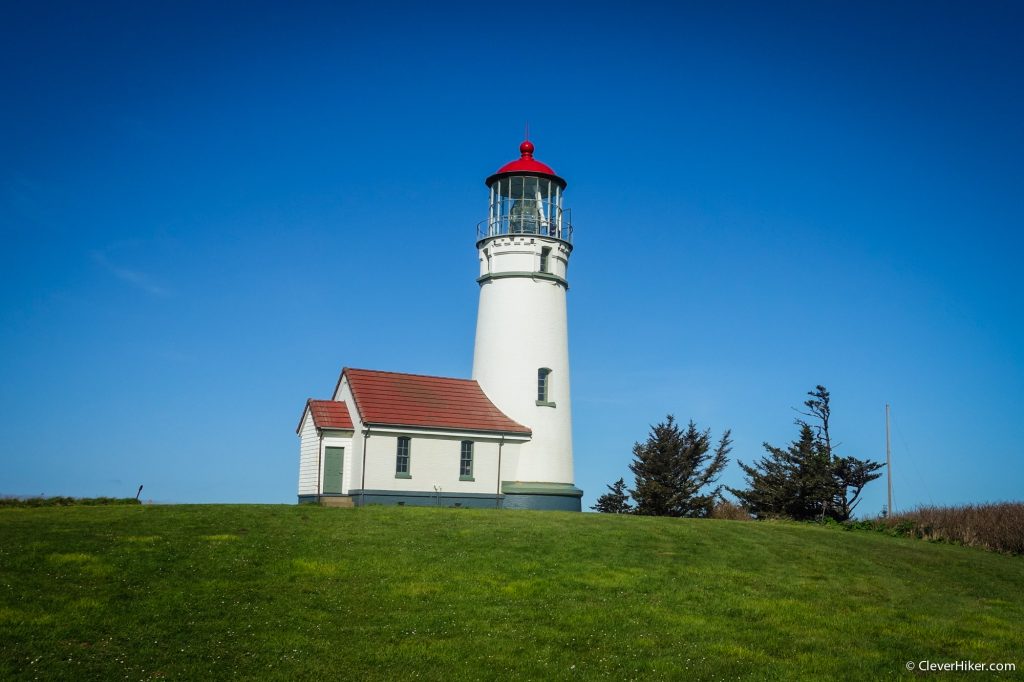
Trip Timing
We spent 3 days and 2 nights hiking this 30-mile stretch of beach. We pack light, so the pace of the trip was quite relaxing. It was almost too relaxing actually – we kinda wanted more walking and did take a couple of side trips to add mileage. If you think you’d enjoy packing lighter (and trust me, you will), check out the top picks and gear recommendations section of my site.
We executed this trip in the beginning of April. This trek is open year-round but it will be best in the spring, summer, and fall when the weather is warmer and river levels are lower. April could have been a tough time for us to cross the rivers, but we didn’t have any issues. Also, pay close attention storm warnings before your trip. The sea can get very angry on the coast when heavy storms roll in, so don’t take any chances.
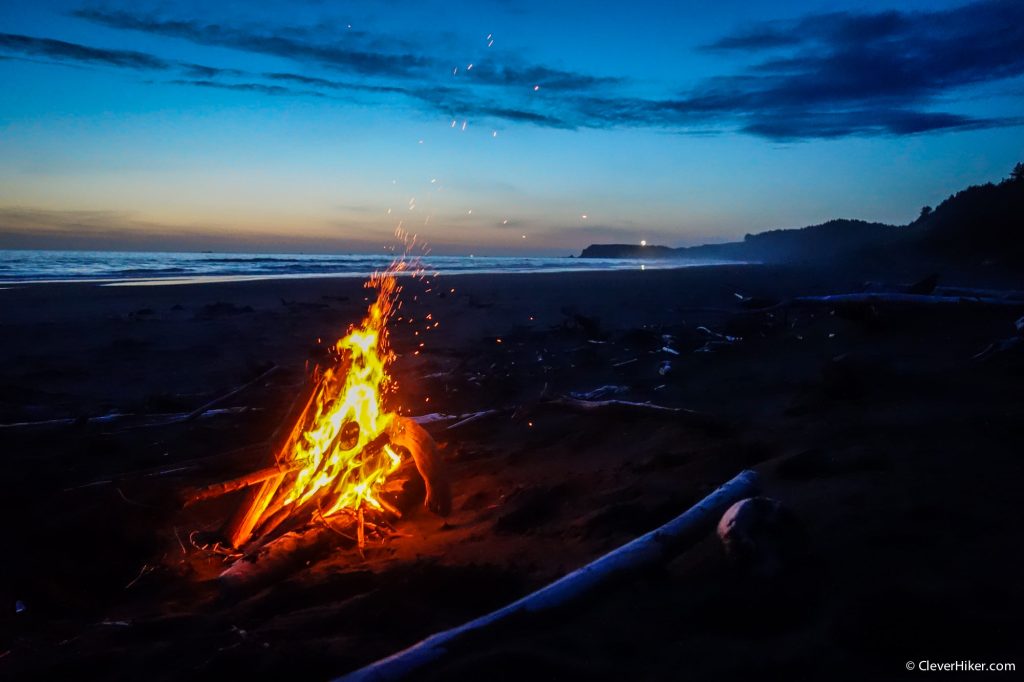
Difficulty – Moderate
This trip is about 30 miles with very little elevation gain and 3 large rivers to ford. When the tide is low there are large sections of hard-packed sand that make the walking easy. When the tide is high (and on some narrow beach sections) you’ll have to walk on softer sand, which is much more tiresome. You’ll only have to walk in soft sand for about ¼ of the trip and it’s not really that bad. Print out a tide timetable for the dates of your trip.
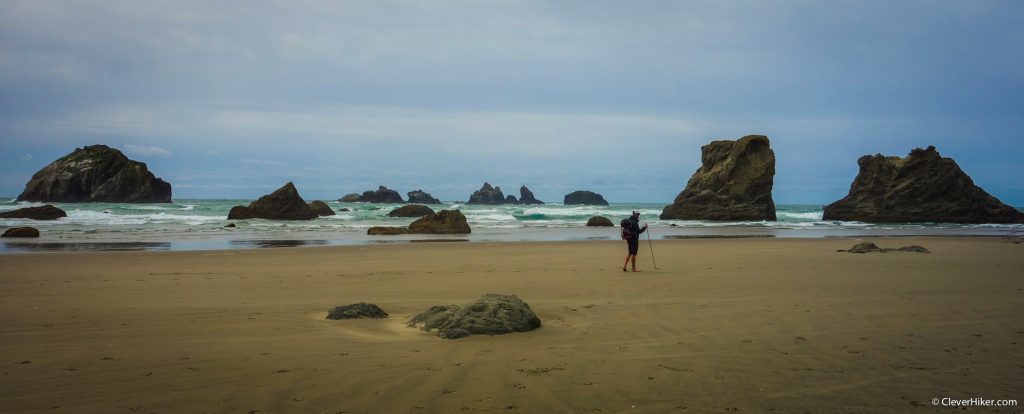
River Crossing
The other possibly challenging element of this trek comes in the form of fording rivers. The Elk River, the Sixes River, and Fourmile Creek will all require getting your feet wet – likely up to thigh level. I’ve done a fair bit of river fording and I consider these to be moderate to advanced crossings depending on the conditions. They will be easy when the river levels are low (summer, early fall), and more challenging when river levels are high. But don’t be dissuaded from this trip just because of these crossings. Learn the skills – This video I produced will help – check on conditions before you travel, take time to scout out a safe ford, cross at a wide section of river, and turn back if it ever feels unsafe.
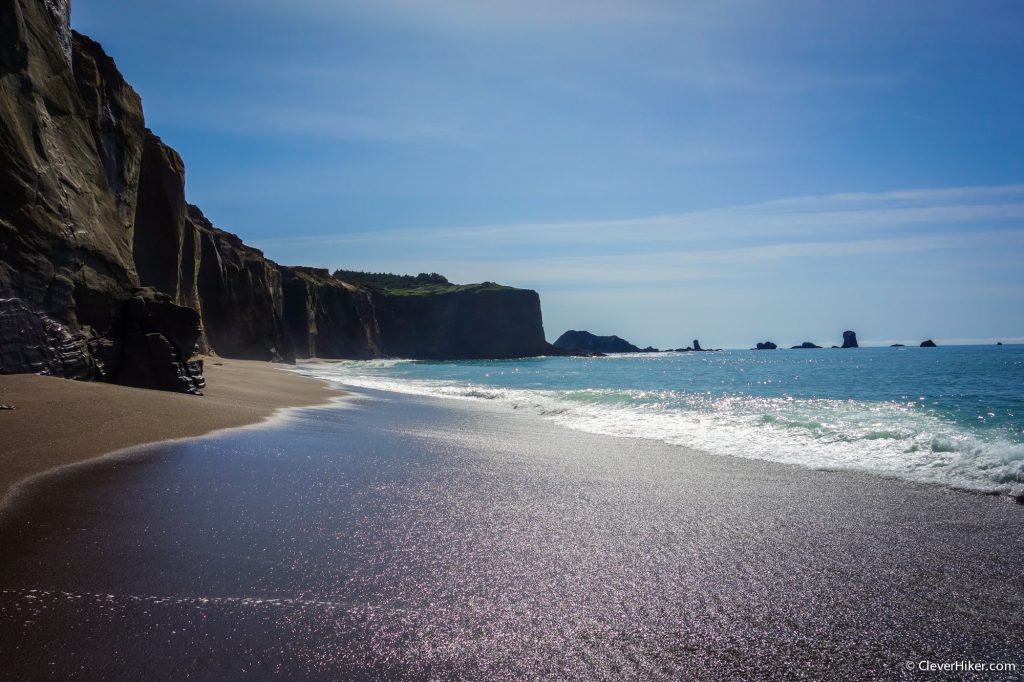
Shuttle / Bus / Hitchhike
You could plan a shorter out-and-back hike on this section, but it’s more common to hike from Bandon to Port Orford (or vice versa) and then shuttle/bus/hitchhike back to where you started. Heading south or north will both be rewarding routes, so choose what’s easiest for you.
The obvious challenge with this strategy is getting back to where you started. You could take two cars, but that rarely makes sense. There is a bus that runs between the two towns, so that’s a solid option. Alternately, you could hitchhike, which is what we did. The 101 runs directly through both towns and is less than a mile from the beach in either town. For that reason it was very easy to pick up a ride. We got a hitch in about 15 minutes and the drive took about 30 minutes or so.
Note: If you’re hitchhiking, don’t get in the car if it doesn’t feel right. Say you just realized that you forgot your camera and you need to go back to look for it. Tell the car to go on without you and walk away. I’ve never had to do that and I’ve done a lot of trail hitchhiking, but you don’t want to take an unnecessary risk.
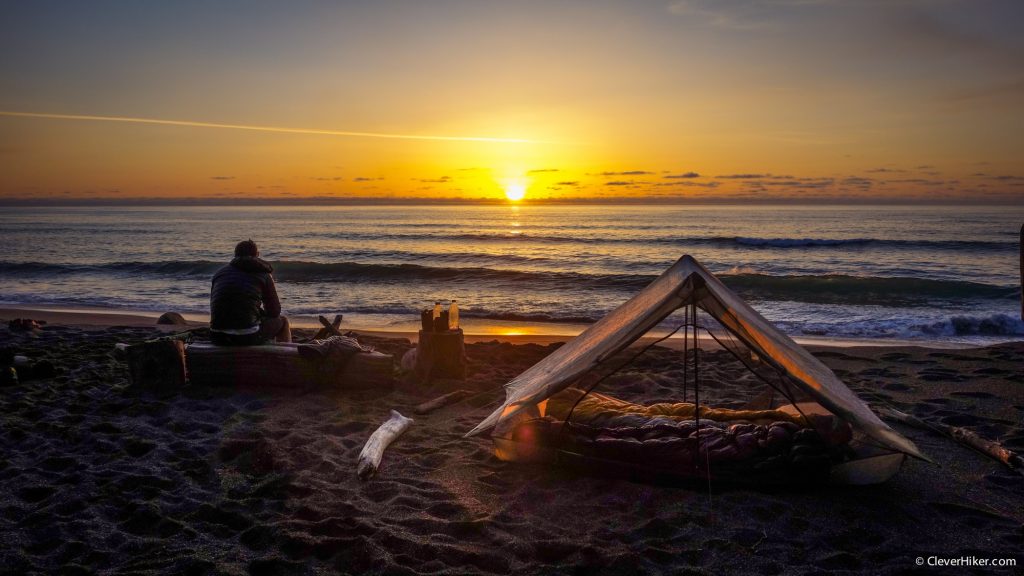
Snowy Plover Camping Restrictions
In general, you can camp anywhere on the Oregon Coast as long as you’re not in a state park, you’re not within view of any houses, and you’re not in a restricted area. In the Bandon to Port Orford section that leaves plenty of areas for camping, but there are some clear restrictions.
The biggest issue is that there’s an 11-12 mile section where you won’t be able to camp starting at Bandon and heading south. This is because the area is restricted due to an endangered bird species – the Snowy Plover. It’s actually a pretty neat little bird, so the hassle seems worth it.
If you plan on hiking south from Bandon, start out early so you can get past this section. If you are heading north from Port Orford, don’t expect to camp anywhere within 11-12 miles of Bandon before your last day of hiking.
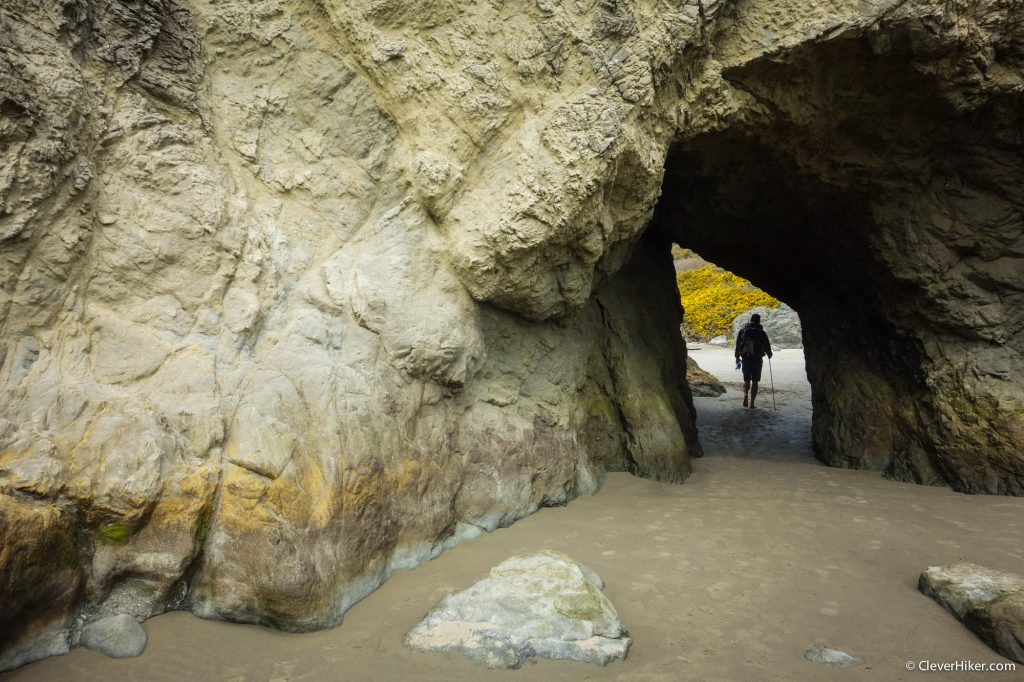
Campfires
There is a lot of driftwood along the Oregon Coast for making great campfires, but PLEASE follow the rules. Practice extreme caution if you plan on having a campfire, even on the beach. It’s an extreme rarity that forest fires are started on purpose. Most of the time people that start forest fires are outdoor enthusiasts that make simple mistakes. Don’t be that guy.
Campfire Rules From: visittheoregoncoast.com – Use small pieces of wood only. Large logs are prohibited. The fire must be west of the vegetation line, NO EXCEPTIONS. Build your fire away from the beach grass & piles of driftwood. Extinguish the fire with water. Don’t just bury it. Doing this will allow the fire to remain hot and continue to smolder for hours. This could also cause someone to get burned.
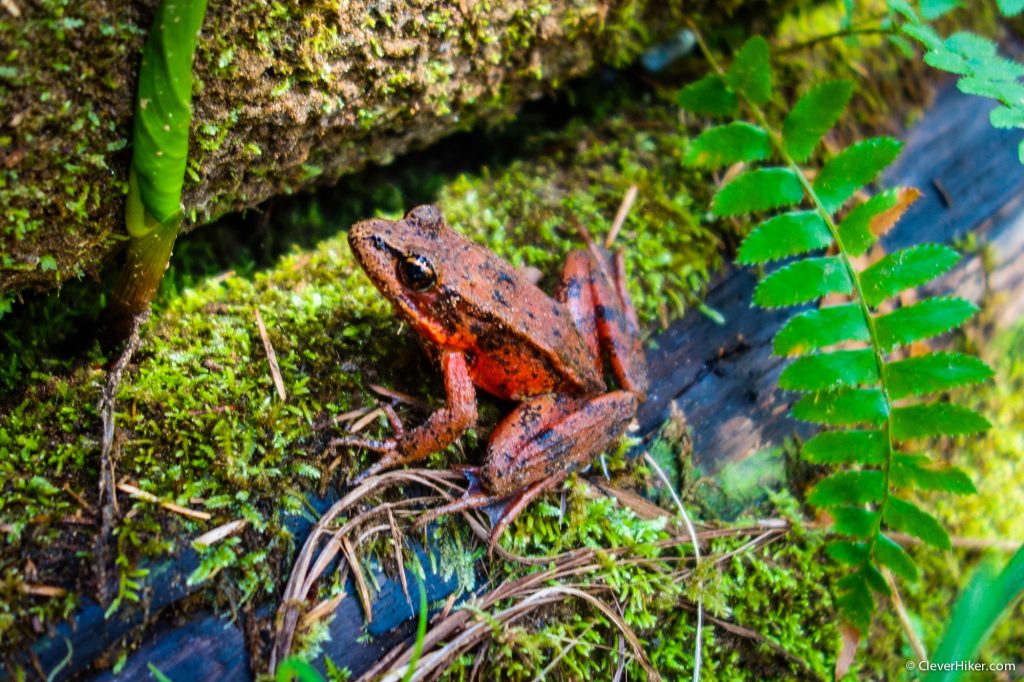
Water / Bugs / Animals
Water is readily accessible along this route. Bring a good water filter.
We had no bug issues at all. You never know though, so be prepared. A combination of Permethrin on your clothing and a VERY small amount of 30% DEET on exposed skin will keep you 100% protected. It’s like wearing a frickin’ mosquito forcefield.
We had no problems with animals either. Please learn how to properly store your food though.
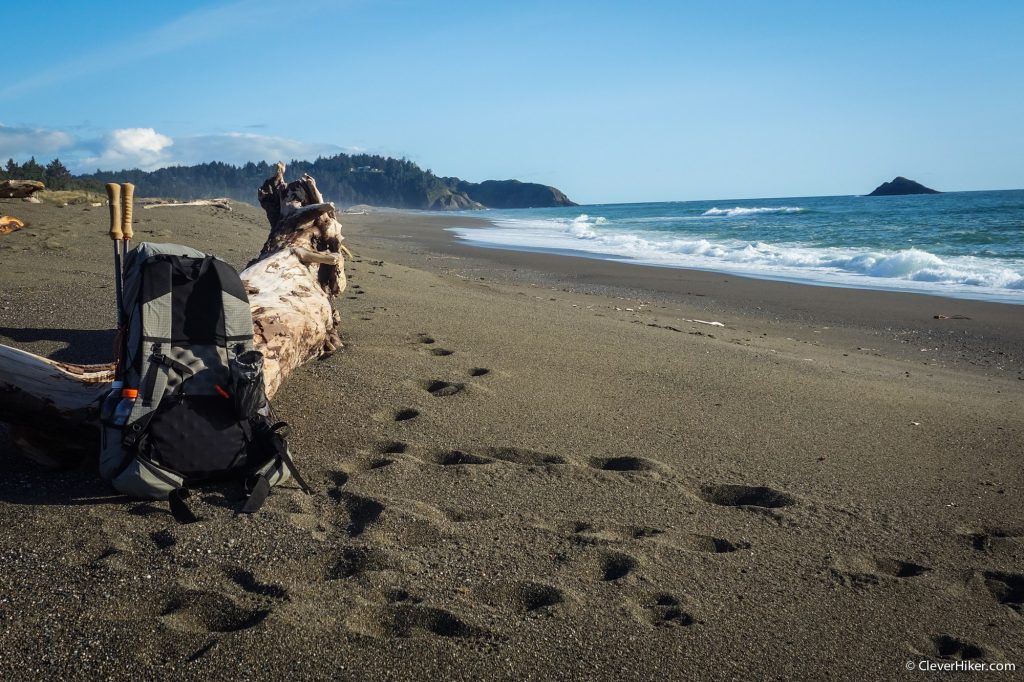
Maps & Guidebook
Maps aren’t really required for this section because you mostly just follow the coast with a couple of bluff walk arounds. That said, you should definitely carry a simple map with you and know all the mileages in-between key landmarks on the trail. There are a few places you could get confused, and that’s always a bummer. A very basic map and some info can be found here.
The Backpacking Oregon Guidebook is a fantastic resource for this hike – and lots of other Oregon backpacking trips. It has play-by-play descriptions of the hike with an easy to follow simple map. I highly recommend picking up a copy of this book – and any of the other states in that series of books.
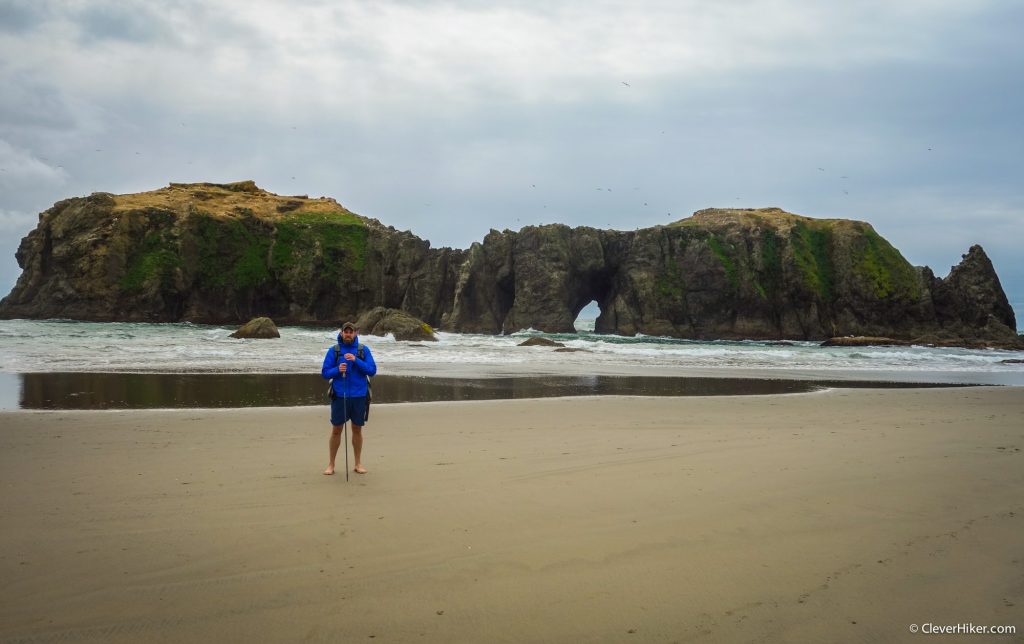
Getting There
It’s pretty easy to get on this “trail” which is mostly beach walking. If you head to Bandon or Port Orford, hit the beach, and start walking towards the other town you’ll be good to go. You might find parking restrictions in either town if you’re looking to park next to the beach, but if you drive a short distance away, you’ll find a place to stash your ride no worries.
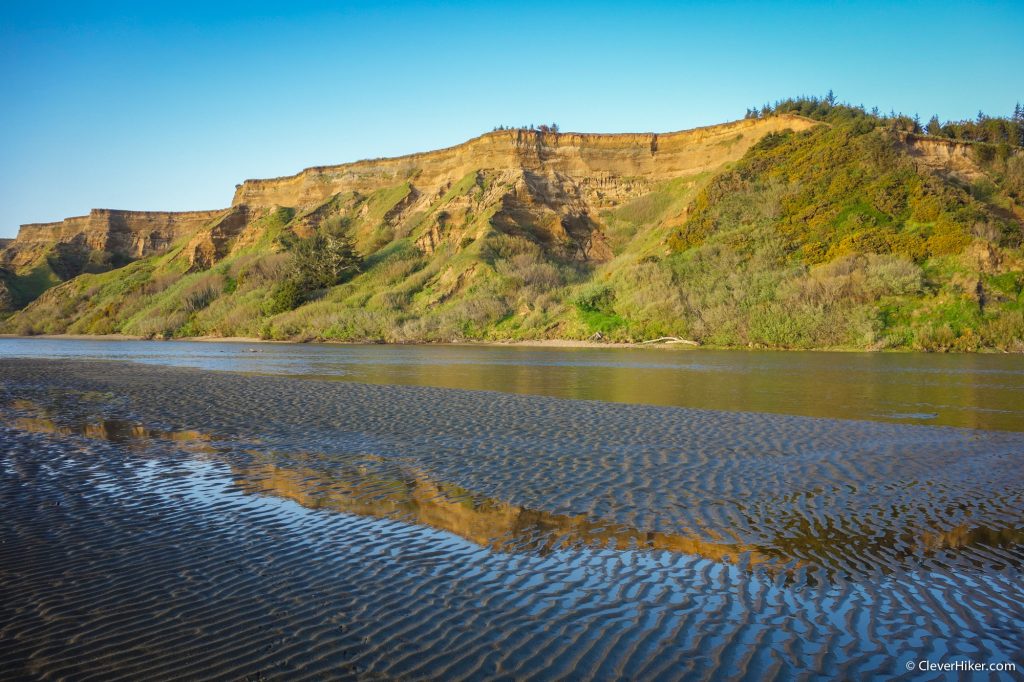
Backpacking Gear
We prefer lightweight backpacking because it’s more comfortable and it allows us to cover more ground with less effort. For recommendations on our favorite lightweight backpacking equipment, check out the CleverHiker Gear Guide and Top Picks page.
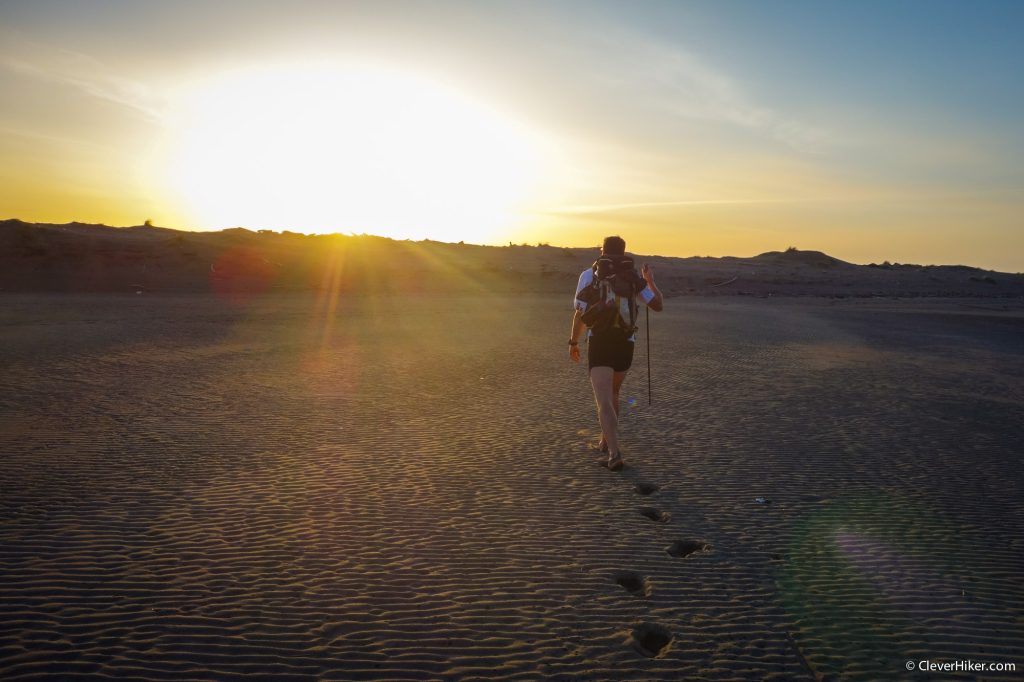
What To Pack
TENT: We used the Zpacks Duplex tent on this trip. We love its combination of incredibly low weight and livability and that’s why it’s one of our top picks on our best lightweight backpacking tents list.
BACKPACK: We used the Gossamer Gear Gorilla backpack on this trek. It’s lightweight, convenient, comfortable, and make our list of the best lightweight backpacking packs.
SLEEPING BAG: We used the Western Mountaineering UltraLite on this backpacking trip. It’s lightweight, incredibly warm, and makes our list of the best backpacking sleeping bags.
SLEEPING PAD: We both used the Therm-a-Rest NeoAir XLite sleeping pad on this trip. It’s light, comfortable, warm, and make our list of the best backpacking sleeping pads.
COOKING SYSTEM: We used the Jetboil MiniMo cooking system and Snow Peak Folding Spoon on this trek, all of which make our top picks gear list and best lightweight stove list.
WATER PURIFIER: We used the SteriPEN Ultra as our main purification method on this trip. It’s lightweight, works fast, and doesn’t require any pumping/squeezing or chemicals. Check out our best water purifiers list for our other top recommendations.
SHOES OR BOOTS: We wore Saucony Peregrine 7 trail runners (Men’s and Women’s) on this trail and they were excellent. If you prefer boots, make sure they’re lightweight and break them in really well before your trip. Here’s why we prefer hiking in trail running shoes: 5 Reasons to Ditch Your Hiking Boots.
HEADLAMP: A small headlamp like the Petzl Actik is an affordable, bright, and lightweight option.
FOOD: When backpacking the Oregon Coast Trail you’ll have to carry all your food. For some suggestions on common backpacking food options, check out our backpacking food video.
FOOD STORAGE: For this trip, we brought an Ursack to keep the critters out of our food. There are no food storage requirements for this area, but you should always store your food properly in the backcountry. Bear canisters and Ursacks are the most effective storage methods and the easiest to use.
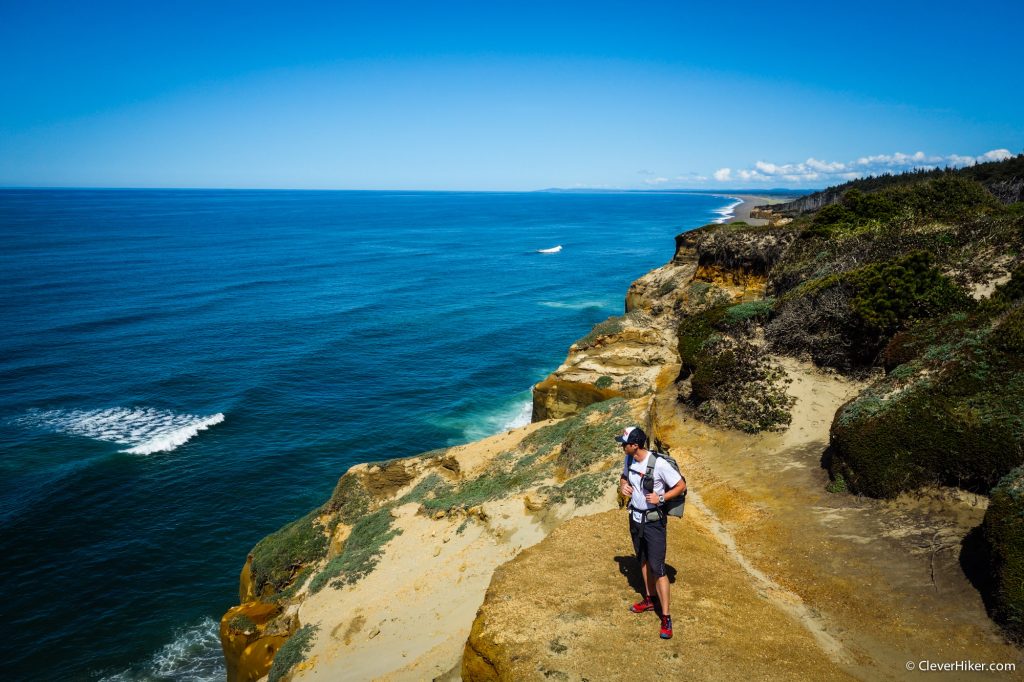
CLOTHING:
Here are some of our favorite hiking/backpacking clothing items from our Top Gear list.
1 Rain jacket shell – Patagonia M10 / Rab Kinetic Plus
1 Pair rain pants – Mountain Hardwear Stretch Ozonic
1 Down jacket – Patagonia Ultralight Down Hoody
1 Fleece jacket – Extra warmth under your down jacket that will be warmer when damp and better to hike in.
1 Pair hiking pants or running tights
1 Pair hiking shorts – Nike dri fit running shorts
1-2 Hiking t-shirts – Nike dri fit t-shirts
1 Long-sleeve shirt – Nike dri fit quarter zip
1-3 Pair underwear – ExOfficio boxer briefs or ExOfficio women’s briefs
2-3 Pair socks (add thin sock liners if using boots) – Balega running socks for warm weather & SmartWool mountaineer socks for snow.
1 Pair long john bottoms – long john top optional for nighttime use.
1 Warm hat
1 Sun hat
1 Pair gloves or mittens
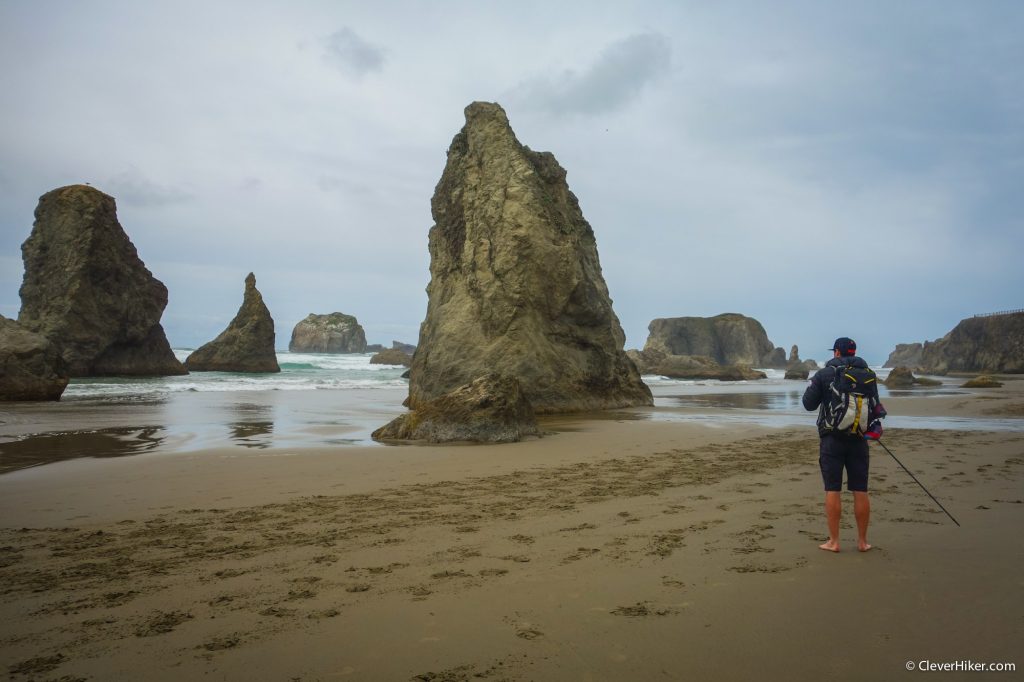
MAP &COMPASS: The Backpacking Oregon Guidebook is a fantastic resource for this hike, offering detailed information on this hike. You can also find a simple map and basic info here. In addition, we always hike with a compass.
FIRST-AID KIT: Always bring a small personalized first aid kit. We used the .5 Ultralight Kit and added extras, like painkillers and personal medications.
SUN PROTECTION: Sunglasses (polarized recommended), sunscreen, and spf lip balm are an absolute must.
POCKET KNIFE: We brought along a small Swiss Army Knife, which came in handy here and there.
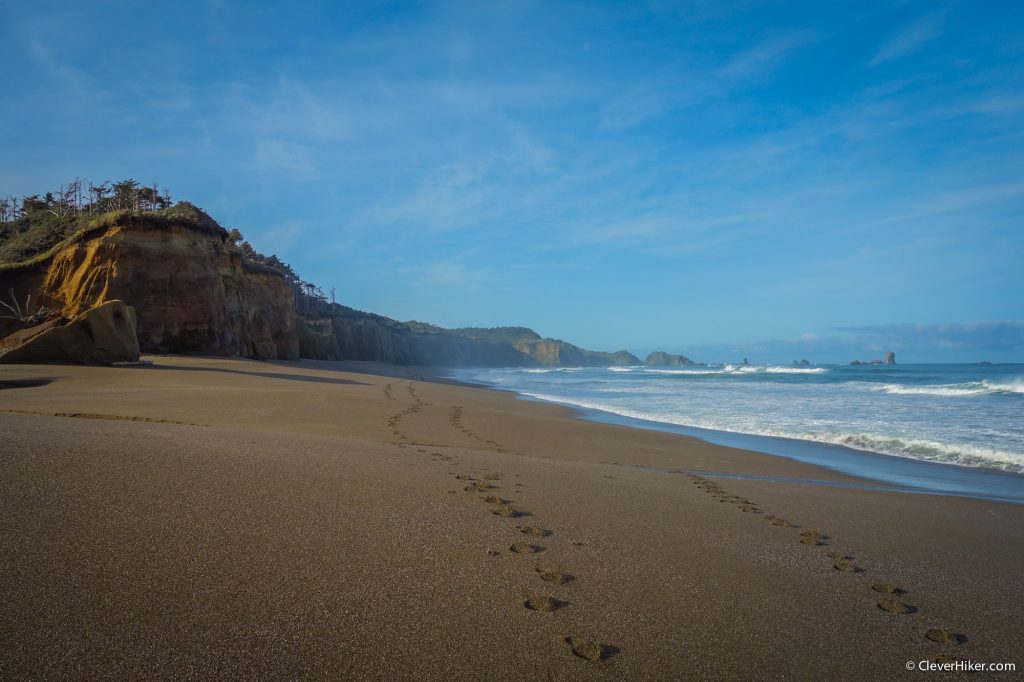
OTHER ITEMS:
- SMALL TOWEL: the Nano pack towel is great.
- CASH and ID
- PERMITS
- PERSONAL TOILETRIES
- HAND SANITIZER: Always apply after using a bathroom and before eating.
- WET WIPES: These can be useful for cleaning up after hiking.
- INSECT REPELLANT: At higher elevations insects weren’t a problem for us at all. For lower elevations, a 1oz bottle of DEET will do the trick.
- CAMERA: The Sony RX100 is our go-to camera for lightweight backpacking.
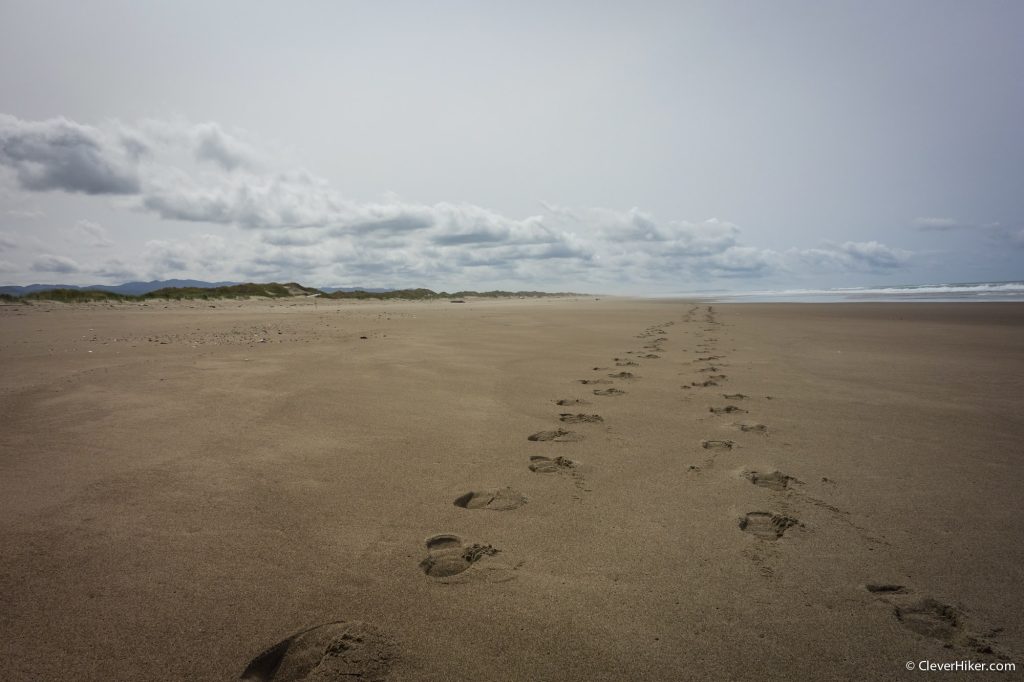
Additional Resources
This dude made two YouTube videos of the trip he took in January 2013. He spends WAY too much time talking about a river crossing that trips him up in the first video and he’s backpacking A LOT heavier than I prefer to. The second video is a much better watch. These video have some good shots of the area’s scenery and I’ll fully support anyone anywhere that has the guts to get out into the wild and hike, however they want to do it.
The Oregon Coast Trail runs the length of Oregon along the coast with some walk-arounds for big rivers and tough sections. Oregon.gov has some helpful info on the OCT as does the National Coast Trail Association.
